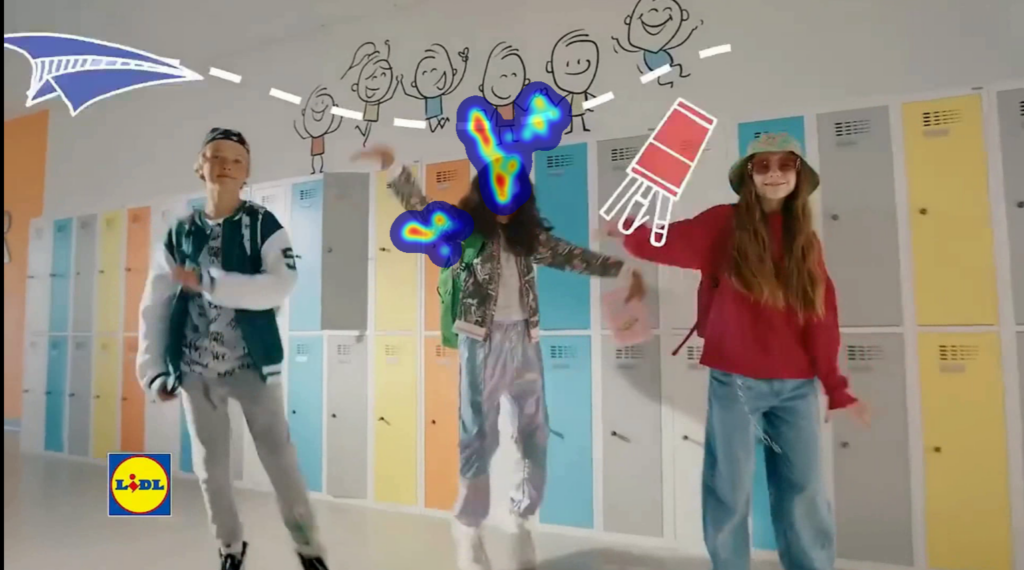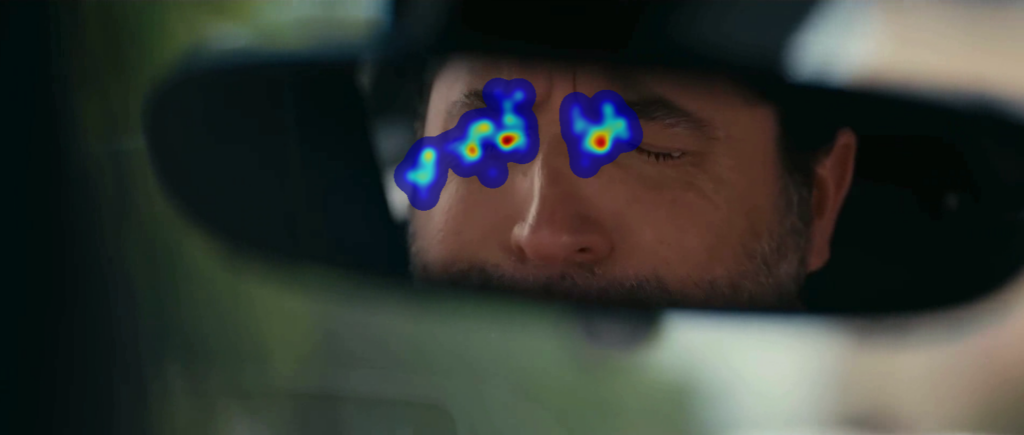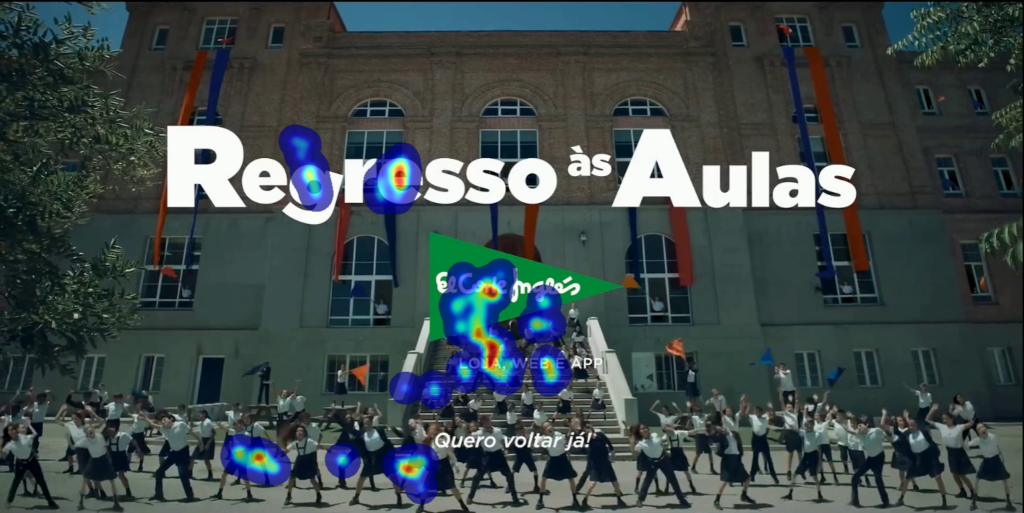WYperformance conducted a neuroscientific study during the month of September, testing three advertisements related to back-to-school, aiming to understand how consumers react to advertising campaigns at a subconscious level.
The brands analyzed were:
Lidl Campaign: Excessive Visual Stimuli and Physiological Impact
The Lidl campaign is characterized by its dynamism and rapid succession of images, a characteristic evident in the results obtained through eye tracking. This data demonstrates that participants had difficulty maintaining focus on a single element for a significant amount of time, resulting in visual dispersion. This excess of stimuli compromised the ability to fixate on and retain the brand, an essential aspect for the effectiveness of any advertising campaign.
Additionally, the heart rate monitoring data revealed that there was no significant increase in heartbeats, suggesting that emotional engagement was limited. This trend was corroborated by the analysis of the galvanic skin response, which remained stable or even gradually decreased throughout the entire advertisement.
Although brief moments of greater emotional impact were identified, particularly during scenes of children singing and dancing, these were not sufficient to create a strong and lasting emotional connection with the audience exposed to the stimulus.
In summary, although the advertisement was clearly aligned with the theme of ‘back to school,’ it failed to generate a significant emotional impact and to capture attention effectively.

Memory: 3 stars
Interest Level: 3 stars
Attention: 3 stars
Emotional Engagement: 3 stars
Wook Campaign: Strong Emotional Engagement and Positive Physiological Response
In contrast, the Wook campaign stood out for its high level of emotional engagement. Data regarding the galvanic skin response indicated a significant increase during the most intense moments of the narrative, particularly in the scenes between father and daughter when they are in the car during the farewell phase. This increase in emotional response was accompanied by a rise in heart rate, indicating greater interest and emotional involvement from the participants.
The results obtained through eye tracking indicated that the participants’ gaze predominantly focused on the facial expressions of the actors, reflecting the campaign’s ability to capture and maintain the viewer’s visual attention. This increase in attention, coupled with the acceleration of heartbeats, demonstrates that the Wook campaign managed to establish a deep emotional connection, providing an engaging experience for the viewers. This strategy, which combines emotion and clarity in the narrative, proved effective in creating a positive and lasting association with the brand.
However, it is important to note that, for some participants, the high emotional content of the advertisement was perceived as excessive. Some members of the sample mentioned that the excess emotion was viewed humorously, indicating a diversity of reactions depending on the viewer’s profile. Nevertheless, the ability to generate strong emotions remains a highlight of this campaign, making it the most memorable.

Memory: 5 stars
Interest Level: 5 stars
Attention: 5 stars
Emotional Engagement: 5 stars
El Corte Inglés Campaign: High Visual Stimulation and Impact in the Final Moments.
The El Corte Inglés campaign, similar to that of Lidl, exhibited an excess of visual stimuli, which was again confirmed by the eye tracking data. Participants showed difficulties in fixating their gaze on specific points due to the amount of simultaneous visual information.
However, unlike the Lidl campaign, El Corte Inglés managed to capitalize on the final moments of the advertisement, where the brand is prominently presented. The analysis of the galvanic skin response showed an increase in emotional engagement during the last seconds of the video, coinciding with the presentation of the brand’s logo. The strategy of presenting the brand when the level of emotional engagement is highest proved to be effective. Nevertheless, the dubbing of voices in the advertisement was received negatively by the participants, which affected the overall perception of the video.

Memory: 3.5 stars
Interest Level: 3 stars
Attention: 3.5 stars
Emotional Engagement: 3 stars
Contemporary advertising increasingly seeks to effectively capture the audience’s attention by using a combination of visual and narrative strategies. In this context, analyzing the impacts of advertising campaigns across different brands is essential to understand what truly resonates with consumers. This study concludes that, in terms of captured attention, the most mentioned elements were the narratives and the music used in the videos, aspects that helped to build a clear message. However, both the Lidl and El Corte Inglés campaigns faced criticism for excessive stimuli, with many participants stating that, despite being visually appealing, the advertisements caused irritation due to the speed of the images and lack of focus.
Overall, the Wook campaign was the most successful in terms of emotional engagement and capturing visual attention, as evidenced by the collected data. The increase in heart rate and prolonged visual fixation indicate that Wook managed to create a strong emotional connection with the audience, resulting in a more positive evaluation. On the other hand, both Lidl and El Corte Inglés faced difficulties in maintaining attention and generating significant emotional engagement, which was reflected in less pronounced physiological responses.
